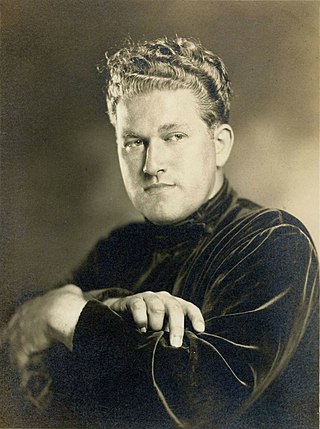
August William Derleth was an American writer and anthologist. He was the first book publisher of the writings of H. P. Lovecraft. He made contributions to the Cthulhu Mythos and the cosmic horror genre and helped found the publisher Arkham House. Derleth was also a leading American regional writer of his day, as well as prolific in several other genres, including historical fiction, poetry, detective fiction, science fiction, and biography. Notably, he created the fictional detective Solar Pons, a pastiche of Arthur Conan Doyle's Sherlock Holmes.

Detective fiction is a subgenre of crime fiction and mystery fiction in which an investigator or a detective—whether professional, amateur or retired—investigates a crime, often murder. The detective genre began around the same time as speculative fiction and other genre fiction in the mid-nineteenth century and has remained extremely popular, particularly in novels. Some of the most famous heroes of detective fiction include C. Auguste Dupin, Sherlock Holmes, and Hercule Poirot. Juvenile stories featuring The Hardy Boys, Nancy Drew, and The Boxcar Children have also remained in print for several decades.

Edgar Allan Poe was an American writer, poet, author, editor, and literary critic who is best known for his poetry and short stories, particularly his tales of mystery and the macabre. He is widely regarded as a central figure of Romanticism and Gothic fiction in the United States, and of American literature. Poe was one of the country's earliest practitioners of the short story, and is considered the inventor of the detective fiction genre, as well as a significant contributor to the emerging genre of science fiction. He is the first well-known American writer to earn a living through writing alone, resulting in a financially difficult life and career.

Crime fiction, detective story, murder mystery, mystery novel, and police novel are terms used to describe narratives that centre on criminal acts and especially on the investigation, either by an amateur or a professional detective, of a crime, often a murder. It is usually distinguished from mainstream fiction and other genres such as historical fiction or science fiction, but the boundaries are indistinct. Crime fiction has several subgenres, including detective fiction, courtroom drama, hard-boiled fiction, and legal thrillers. Most crime drama focuses on crime investigation and does not feature the courtroom. Suspense and mystery are key elements that are nearly ubiquitous to the genre.

"The Murders in the Rue Morgue" is a short story by Edgar Allan Poe published in Graham's Magazine in 1841. It has been described as the first modern detective story; Poe referred to it as one of his "tales of ratiocination".
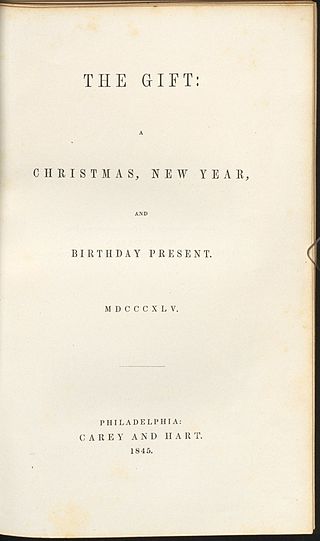
"The Purloined Letter" is a short story by American author Edgar Allan Poe. It is the third of his three detective stories featuring the fictional C. Auguste Dupin, the other two being "The Murders in the Rue Morgue" and "The Mystery of Marie Rogêt". These stories are considered to be important early forerunners of the modern detective story. It first appeared in the literary annual The Gift for 1845 (1844) and soon was reprinted in numerous journals and newspapers.

Mystery is a fiction genre where the nature of an event, usually a murder or other crime, remains mysterious until the end of the story. Often within a closed circle of suspects, each suspect is usually provided with a credible motive and a reasonable opportunity for committing the crime. The central character is often a detective, who eventually solves the mystery by logical deduction from facts presented to the reader. Some mystery books are non-fiction. Mystery fiction can be detective stories in which the emphasis is on the puzzle or suspense element and its logical solution such as a whodunit. Mystery fiction can be contrasted with hardboiled detective stories, which focus on action and gritty realism.

Le ChevalierC. Auguste Dupin is a fictional character created by Edgar Allan Poe. Dupin made his first appearance in Poe's 1841 short story "The Murders in the Rue Morgue", widely considered the first detective fiction story. He reappears in "The Mystery of Marie Rogêt" (1842) and "The Purloined Letter" (1844).
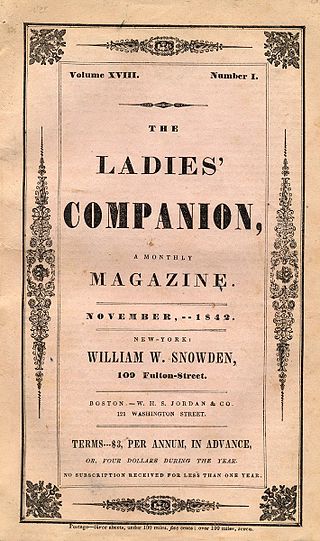
"The Mystery of Marie Rogêt", often subtitled A Sequel to "The Murders in the Rue Morgue", is a short story by American writer Edgar Allan Poe written in 1842. This is the first murder mystery based on the details of a real crime. It first appeared in Snowden's Ladies' Companion in three installments, November and December 1842 and February 1843. Poe referred to it as one of his "tales of ratiocination".

The Man with a Cloak is a 1951 American film noir crime-thriller-drama directed by Fletcher Markle and starring Joseph Cotten, Barbara Stanwyck, Louis Calhern, and Leslie Caron, and based on "The Gentleman from Paris", a short story by John Dickson Carr.
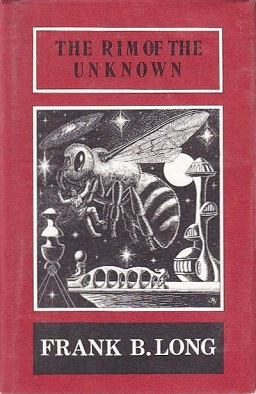
The Rim of the Unknown is a collection of 23 stories by American writer Frank Belknap Long. It was published by Arkham House in 1972 with cover art by Herb Arnold and was the author's second collection of stories published by Arkham House. It was published in an edition of 3,650 copies.
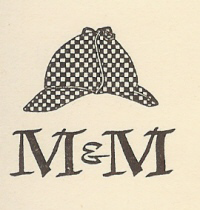
Mycroft & Moran was an imprint of Arkham House publishers and was created in Sauk City, Wisconsin in 1945. The imprint was created to publish weird detective stories and the Solar Pons stories by August Derleth. Arkham retired the imprint in 1982, but has recently allowed it to be revived by another small press publisher.
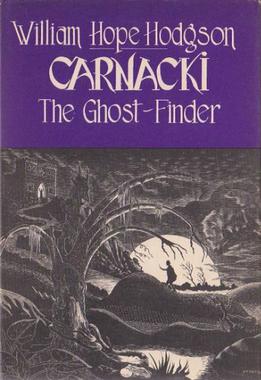
Carnacki the Ghost-Finder is a collection of occult detective short stories by English writer William Hope Hodgson, featuring the titular protagonist. It was first published in 1913 by the English publisher Eveleigh Nash. In 1947, a new edition of 3,050 copies was published by Mycroft & Moran and included three additional stories. In 1951 Ellery Queen covered the Mycroft & Moran version as No. 53 in Queen's Quorum: A History of the Detective-Crime Short Story As Revealed by the 100 Most Important Books Published in this Field Since 1845.
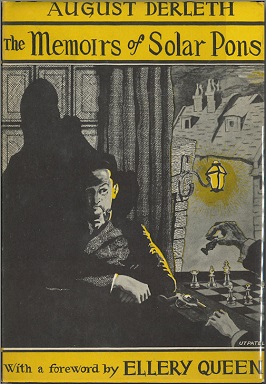
The Memoirs of Solar Pons is a collection of detective fiction short stories by American writer August Derleth. It was released in 1951 by Mycroft & Moran in an edition of 2,038 copies. It was the second collection of Derleth's Solar Pons stories which are pastiches of the Sherlock Holmes tales of Arthur Conan Doyle.

Edgar Allan Poe has appeared in popular culture as a character in books, comics, film, and other media. Besides his works, the legend of Poe himself has fascinated people for generations. His appearances in popular culture often envision him as a sort of "mad genius" or "tormented artist", exploiting his personal struggles. Many depictions of Poe interweave elements of his life with his works, in part due to Poe's frequent use of first-person narrators, suggesting an erroneous assumption that Poe and his characters are identical.
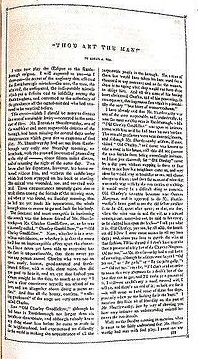
"Thou Art the Man", originally titled "Thou Art the Man!", is a short story by Edgar Allan Poe, first published in 1844. It is an early experiment in detective fiction, like Poe's "The Murders in the Rue Morgue", though it is generally considered an inferior story.
Mary Cecilia Rogers was an American murder victim whose story became a national sensation.
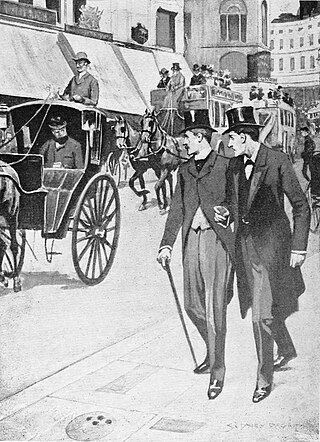
The gentleman detective, less commonly lady detective, is a type of fictional character. He has long been a staple of crime fiction, particularly in detective novels and short stories set in the United Kingdom in the Golden Age. The heroes of these adventures are typically both gentlemen by conduct and often also members of the British gentry. The literary heroes being in opposition to professional police force detectives from the working classes.
Tales of Mystery & Imagination is a popular title for posthumous compilations of writings by American author, essayist and poet Edgar Allan Poe and was the first complete collection of his works specifically restricting itself to his suspenseful and related tales.
Sherlock Holmes in the Great Murder Mystery is a 1908 American silent film produced by the Crescent Film Company of New York, and directed by early film pioneer, Fred J. Balshofer. The film was released on 27 November 1908 and is an adaptation of Edgar Allan Poe's 1841 short story "The Murders in the Rue Morgue", which is considered the first detective story, though the plot was altered to include Arthur Conan Doyle's detective Sherlock Holmes instead of Poe's C. Auguste Dupin.

















